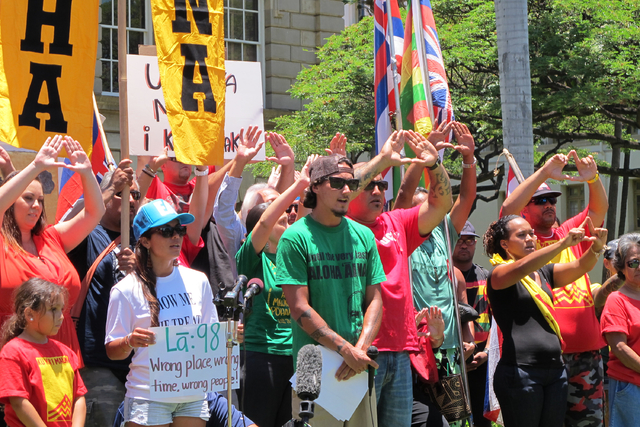HONOLULU (AP) — More than 2,500 astronomers from around the world are descending on Hawaii for a conference at a time when telescope construction is a sensitive issue in the state. ADVERTISING HONOLULU (AP) — More than 2,500 astronomers from
HONOLULU (AP) — More than 2,500 astronomers from around the world are descending on Hawaii for a conference at a time when telescope construction is a sensitive issue in the state.
The International Astronomical Union’s general assembly starts Monday. It was planned years in advance but is happening amid protests against the building of telescopes atop two mountains held sacred by Native Hawaiians. Some demonstrators on Maui and the Big Island were arrested Friday as scientists from more than 75 countries headed to Hawaii for the meetings.
Conference organizers and police are bracing for peaceful demonstrations near the Hawaii Convention Center in Honolulu.
Kealoha Pisciotta, one of the protest leaders, said demonstrations are expected to include mostly people holding signs. She said she hopes attendees take time to learn why protesters oppose the telescope on Mauna Kea. Protesters say they’re not against astronomy but believe building on those mountains represents desecration.
“As the IAU and our conference are not affiliated with the construction of telescopes, the focus of the general assembly is to offer scientific presentations, policy discussions and meetings to the conference attendees,” Piero Benvenuti, the organizations’ deputy general secretary, said in an email.
Convention plans previously offered an optional excursion to Mauna Kea. But that was canceled after the mountain’s access road was closed indefinitely, Benvenuti said. Convention organizers are disappointed that visiting astronomers won’t be able to visit what’s considered one of the world’s foremost sites for astronomy, Benvenuti wrote.
However, “we deeply respect the views of all parties involved, and it is our sincere hope that moving forward, there will be an open, productive dialogue among all parties involved, creating a shared, long-term vision for Mauna Kea,” he said.




